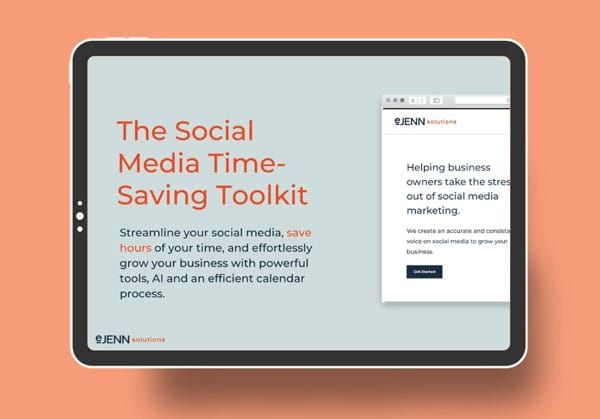How to Leverage User-Generated Content (UGC)

A Comprehensive Guide for Small Businesses
As a business, you’re probably constantly seeking cost-effective ways to boost your online presence and engage with customers. We suggest looking at user-generated content (UGC), a powerful tool for transforming your marketing strategy and building a thriving community around your brand.
What is User-Generated Content?
User-generated content refers to any form of content –text, images, videos, or reviews – created by your customers or followers rather than your brand. This content is authentic, relatable, and often more influential than traditional marketing materials.
Why UGC Matters for Small Businesses
- Authenticity and Trust: In an era where consumers are bombarded with advertisements, UGC stands out as genuine and trustworthy. When potential customers see real people using and enjoying your products or services, it builds credibility and trust in your brand.
- Cost-Effectiveness: UGC is essentially free marketing material. Your customers create content for you, reducing the need for expensive photo shoots or video productions.
- Increased Engagement: UGC encourages brand and customer interaction. It creates a two-way conversation, fostering a sense of community and loyalty.
- Diverse Content Creation: Your customers can devise creative ways to showcase your products or services that you might never have thought of, providing fresh perspectives and ideas.
Types of User-Generated Content
- Social Media Posts:
- Why: These provide authentic, real-time engagement and showcase your products in real-life situations.
- How: Encourage customers to tag your business in their posts. Repost (with permission) customer stories or posts that feature your products or services.
- Reviews and Testimonials:
- Why: 93% of consumers say online reviews impact purchasing decisions.
- How: Take reviews left on one platform (e.g., Google My Business) and create eye-catching graphics to showcase on other platforms like Instagram or Facebook. This cross-pollination maximizes the impact of positive feedback.
- Q&A and Forums:
- Why: These demonstrate your expertise and address common customer concerns, potentially reducing customer service inquiries.
- How: Create a dedicated Q&A section on your website. Encourage customers to ask questions, then feature the best Q&As in your email newsletter or social media posts. Some companies even hold “Ask Me Anything” sessions where the customers can ask questions about the business, products or “how tos”!
- Blog Comments:
- Why: Comments foster community engagement and can provide valuable insights into customer needs and preferences.
- How: Highlight insightful comments in follow-up blog posts or social media content. This shows you value customer input and encourages more engagement.
- Customer Photos and Videos:
- Why: Visual content is highly engaging and can showcase your products in diverse, real-world contexts.
- How: Create a branded hashtag for customers to use when posting photos or videos with your products. Curate the best submissions into a gallery on your website or in your store.
How to Encourage UGC Creation
- Run Contests and Giveaways:
- Why: Contests can rapidly increase engagement and UGC creation, while also growing your audience.
- How: Host a photo contest where customers submit pictures using your product. Offer a prize for the most creative or popular submission. Use a unique hashtag to track entries.
- Create Branded Hashtags:
- Why: Hashtags make it easy to find and curate UGC, while also increasing brand visibility.
- How: Develop a catchy, brand-specific hashtag. For example, if you’re a local coffee shop named “Bean There,” you might use #BeanThereSippedThat. Promote this hashtag in-store, on receipts, and across all your social media profiles.
- Offer Incentives:
- Why: Rewards motivate customers to create and share content featuring your brand.
- How: Implement a loyalty program where customers earn points for sharing UGC. These points could be redeemable for discounts or exclusive products. For instance, a customer who posts a photo with your product and tags your business might earn 100 loyalty points.
- Engage with Existing Content: THIS IS THE MOST OVERLOOKED OPPORTUNITY!
- Why: Engaging with UGC encourages more creation and fosters a sense of community around your brand.
- How: Set up social listening tools to track mentions of your brand, even when you’re not tagged. Comment on and share UGC, asking questions to encourage further engagement. For example, if a customer posts a photo of your product, you might comment, “Great shot! How are you enjoying it so far?”
- PRO TIP: Respond and comment on your competitor’s comments … this can create fun, and if your competitor isn’t responding to their people … you are! 😊
- Make Sharing Easy:
- Why: Reducing friction in the sharing process increases the likelihood of UGC creation.
- How: Add social sharing buttons to key pages on your website, especially post-purchase pages. For brick-and-mortar stores, create Instagram-worthy spots or photo opportunities. For example, a boutique might set up a stylish mirror with good lighting and display your store’s hashtag nearby.
- Create a UGC-Focused Campaign:
- Why: Dedicated campaigns can drive a surge in UGC and create a lasting habit of content creation among your customers.
- How: Launch a campaign that ties into your brand values or a current trend. For instance, a sustainable clothing brand might run a #SecondHandStyle campaign, encouraging customers to share how they style and re-wear their purchases.
- Collaborate with Micro-Influencers:
- Why: Micro-influencers often have highly engaged audiences and can inspire their followers to create UGC.
- How: Partner with micro-influencers in your niche to create content featuring your products. Please encourage them to ask their followers to share their experiences with your brand, kickstarting a wave of UGC.
Remember, the key to successful UGC strategies is consistency and authenticity. Regularly implement these tactics, engage genuinely with your customers, and always obtain proper permissions before using customer content in your marketing efforts. Let’s talk about permissions below!
Best Practices for Featuring UGC
- Obtain Proper Permissions: Always ask for permission before using someone’s content in your marketing materials.
- Credit Original Creators: Tag or mention the original creator when sharing their content.
- Curate Quality Content: While all UGC is valuable, be selective about what you feature on your official channels.
- Integrate UGC Across Channels: Use UGC in your email marketing, website, social media, and even in-store displays.
- Respond and Engage: Interact with UGC by commenting, liking, or sharing to encourage more participation.
Measuring UGC Success
- Key Metrics to Track:
- Engagement rates (likes, comments, shares)
- Conversion rates from UGC-featured campaigns
- Volume of UGC created
- Sentiment analysis of UGC
- Tools for Monitoring and Analyzing UGC:
- Social media management platforms (e.g., Hootsuite, Sprout Social)
- Social listening tools (e.g., Mention, Brandwatch)
- UGC-specific platforms (e.g., TINT, Creator.co, Yotpo)
- Setting Realistic Goals: Start with small, achievable targets and gradually increase them as your UGC strategy matures.
Legal Considerations
- Copyright Laws: Understand that creators own the rights to their content, even if it features your product.
- Clear UGC Policy: Develop and prominently display a policy outlining your use of UGC.
- Disclosure Requirements: Ensure contests or sponsored content comply with FTC guidelines.
User-generated content (UGC) is a powerful tool for small businesses looking to build trust, engage customers, and create a vibrant brand community. By encouraging and properly leveraging UGC, you can tap into your customers’ authentic voices to drive growth and loyalty.
Start small, be consistent, and always prioritize genuine engagement with your community. UGC can become one of your most valuable marketing assets with time and effort.
Additional Resources
- Tools for Managing UGC:
- Later (for Instagram)
- Pixlee (for e-commerce)
- Stackla (for enterprise-level UGC campaigns)
- Further Reading:
- FTC’s Overview – Running Contests online
https://www.ftc.gov/business-guidance/resources/ftcs-endorsement-guides-what-people-are-asking#socialmediacontests - FTC’s Endorsement Guides for ethical UGC practices
https://www.ftc.gov/business-guidance/resources/ftcs-endorsement-guides-what-people-are-asking
- FTC’s Overview – Running Contests online
